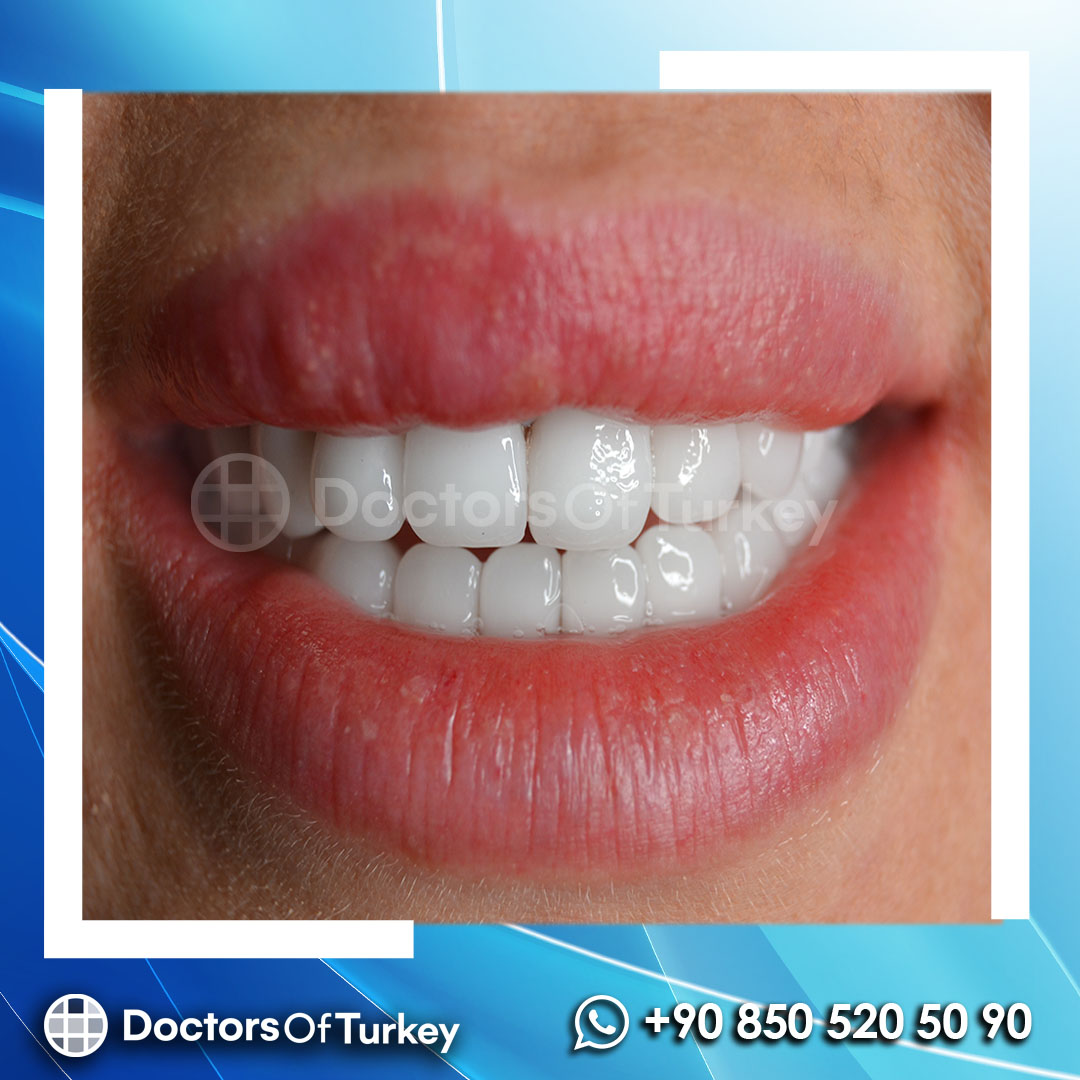Laminate Veneer
What is Laminate Veneer?
They are also known as laminate veneers, laminated teeth, porcelain laminates or leaf porcelain or nail teeth. Lamina means leaf in Latin. In smile design, they are thin porcelain structures with a thickness of 0.3-0.7 mm, which are adhered to the front surface of the teeth to give the desired tooth form and tooth color.
We can think of laminate veneers as ladies' fake nails. From time to time, if the teeth are to be pulled outward from their position, they require less or even no tooth cutting, while if the teeth are to be positioned thinner than the current position or to be positioned inwards, they require more tooth cutting than this amount.
In which cases is laminate veneer applied?
They are applied to give a new smile to the person in yellowing teeth and discoloration of existing teeth, in crooked teeth where orthodontic braces treatment is not desired or not performed, in the presence of worn extremely short teeth, in the presence of gap teeth, diastemas, in the presence of distorted teeth, in short, in many situations that make us unhappy aesthetically. .
What are the advantages of laminate veneers?
In dentistry, porcelain is the most aesthetically successful and long-lasting material. Laminate veneers offer us the most conservative method for using porcelain on existing teeth for aesthetic purposes. Thanks to the laminates that can be applied to the existing teeth, sometimes without even any abrasion, the dentist can apply the smile design that is suitable for the person. Since the chewing surfaces of the teeth are not touched, they do not cause any discomfort to the person and there is no problem of getting used to it. It is the method in which the most perfect result is obtained in terms of aesthetics. This is due to the high light transmittance of the material. They adapt to the teeth permanently, like the tooth's own enamel, and cannot be removed when bonded.
What are the disadvantages of laminate veneers?
Compared to other methods, its application and construction phase is very sensitive. It requires high technical skill. The construction phase in the laboratory and the bonding process in the mouth require meticulousness. For these reasons, it is an expensive application.
Can anyone have a laminate veneer?
It can be done to anyone of any age who needs a smile design. It cannot be performed in cases of missing teeth, when there is excessive filling, caries or wear on the back surfaces of the teeth, excessive gingival recession, excessive bruxism, and teeth grinding. The suitability for the person can only be determined with the recommendation of the dentist as a result of the examination in terms of the most accurate method and material.
How long is the life of laminate veneer teeth?
As long as their teeth and gums are healthy, they can be used for many years without any problems. Lamina veneers maintain their shine and color. They can continue to be used as long as the changes in the surrounding tissues over the years do not cause aesthetic problems again.
Do laminate veneer teeth turn yellow?
Lamina teeth made of the highest quality ceramic preserve their color and shine without losing them. They are not affected by cigarettes, tea, coffee, etc. A yellowing that occurs can only occur when a tooth turns yellow as a result of losing its vitality.
Do laminate veneer teeth fall out?
Lamina teeth are adhered to the tooth using resin adhesives with adhesive methods and it is not possible to remove or fall out again. When they are removed, they can be removed by abrading with diamond burs, as if cutting a tooth from the beginning.
How long does it take to get a laminate veneer?
The laboratory production stages of laminated teeth take 3-4 days, but with the smile design and detailed preliminary studies, this period should be considered as about 1 week. After 1 week after tooth cutting and impression session, it basically takes 2 sessions as bonding session.


































